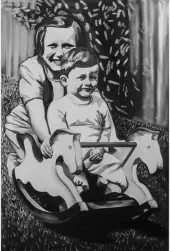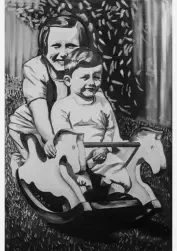Susie Raz
Copyright © Susie Raz 2024
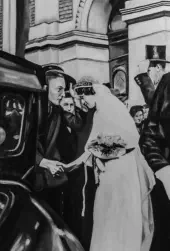
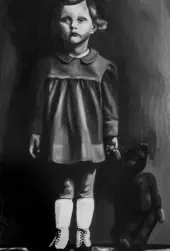
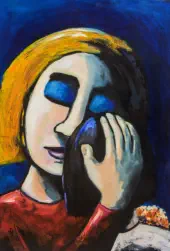
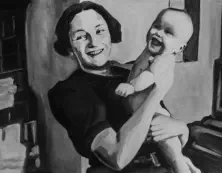
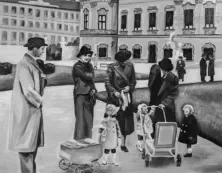
Vienna 1934 - 1938
Prior to the rise of Nazism and the outbreak of WWII, my family lived in Czechoslovakia and Austria for a number of generations. Both my grandparents
were born and raised in Vienna. My mother also was born here. On the 8th of November 1938, my grandfather, Hans, aged 32, my grandmother,
Henriette, aged 29, and my mother, Anneliese, aged 2 obtained a landing permit and escaped to Melbourne, Australia.
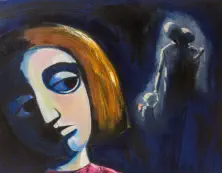
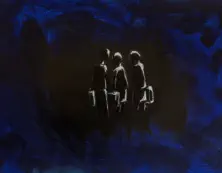
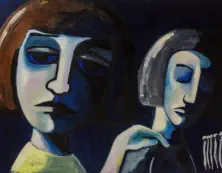
Elsa, 1938 - 1944
On 12 March 1938, Austria was annexed by Nazi Germany. German troops crossed the border into Austria, unopposed by the Austrian military. Hans
Schwabach, his wife Henriette, and daughter Annelise left their home in Vienna and arrived in Melbourne, Australia on 13 January 1939. Hans changed
his name to John Carew and secured landing permits for his wife's parents, Sigmund and Friederika, and his mother Elsa. Sigmund and Friederika
arrived in Melbourne on 14 April 1940.
Elsa never received her landing permit, and along with her brother-in-law Otto and niece Kathe, was sent to Theresienstadt, a town used by Nazi
Germany from 1941 to 1945 as a walled concentration camp and waystation to other death camps. Otto died on 10 April 1944 from illness after
successfully convincing German troops several times not to send Elsa away to another camp. Kathe was able to get Elsa out of the transports one last
time after Otto's death. After that, those in charge would no longer listen to her pleas, and in October, Elsa was sent to Auschwitz where she was
murdered by the Nazis on 9 October 1944. Theresienstadt was liberated on 8 May 1945.
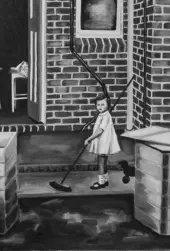
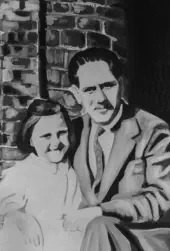
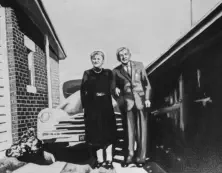
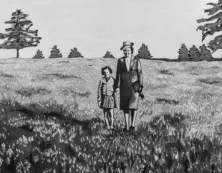
Melbourne, 1938 - 1950
The young family arrived in Melbourne on the 13th of January 1939. Upon arrival, my grandfather obtained 2 more landing permits – one for his
mother, Elsa, and one for his parents in law, Zigmund and Friederike. On the 14th of April 1940, Zigmund and Friederike joined the family. Elsa never
arrived. There was no word from her after the 8th September 1942.
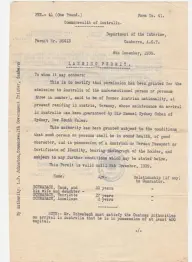
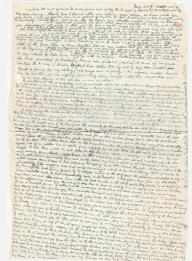
Original documents
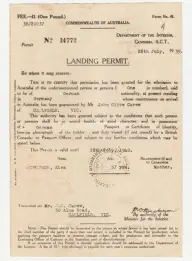
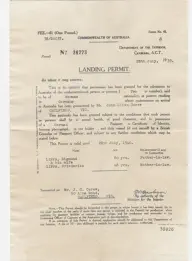
Family Tree
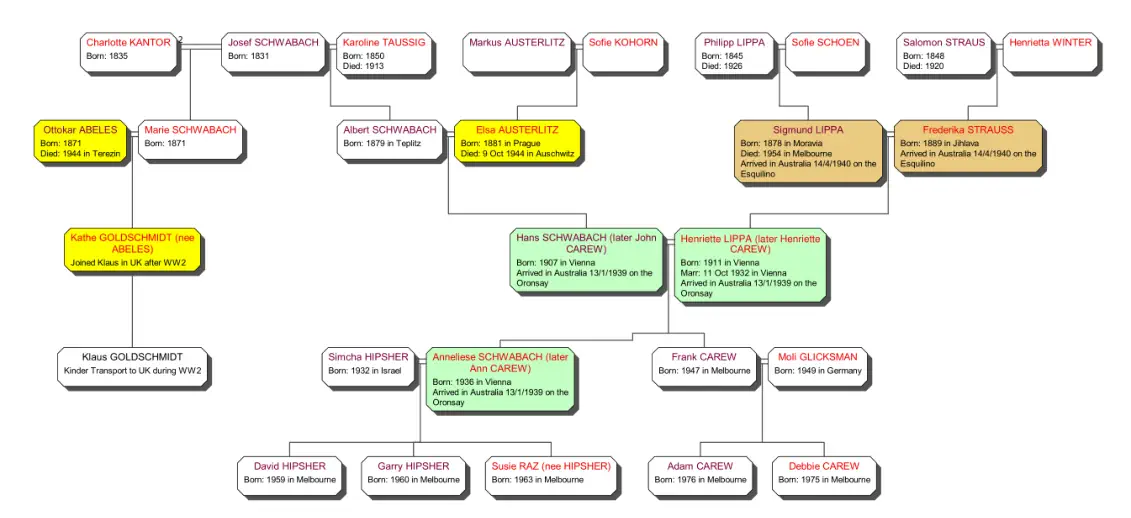
For the one whose voice was silenced
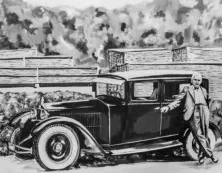
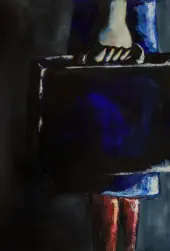
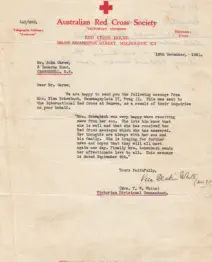
Background
For a number of years, I had been planning to write my family’s story so it would not be lost to future generations. My mother, already in her 80’s, was
the last link to life in Vienna, having escaped with her parents at the age of 2.
While I had already sorted through many of the original documents kept by my grandfather, it was only during the long hours of lockdown in Melbourne
that I had the time to pour over these documents more thoroughly. This was when I discovered the letter from ‘Tante Kathe’, which had never been seen
by any living members of my family. Kathe, my grandfather’s cousin, was sent to a concentration camp with her father, Otto, and my grandfather’s
mother, Elsa. Unlike Elsa, she was not murdered by the Nazis.
In her letter to my grandfather, written from Prague in 1945, Kathe recounts exactly what happened to Elsa. By this time, my grandfather had already
received a telegram from the Red Cross notifying him that his mother had been murdered in Auschwitz. My mother tells the story how she came home
from school one day to find her father sitting in the loungeroom crying, the telegram in his hand. Although there had been no word from Elsa after
September 1941, for over 3 years he had lived in hope that she would be found alive after the war.
It remains a mystery why Kathe wrote this letter to my grandfather in English when their mother tongue was German. Written on a flimsy piece of
paper in minute hand writing, my son and I began to decipher and transcribe the letter using a magnifying glass. As the details of Elsa’s fate unfolded, it
became clear to me that I needed to tell her story through my paintings. With no photographic evidence, I used my imagination to create 5 paintings
which symbolically told Elsa’s story from the time before the war when she was with her family to the moment she was sent to Auschwitz. These I
flanked with 10 more paintings based on family photos – 5 paintings from my family’s life in Vienna before the rise of Nazism and 5 paintings from the
early days in Melbourne of the family members who escaped. Elsa’s story thus became the centre around which everything else revolved.
Artist Statement
This project tells the story of the persecution of my family in Europe during WWII. It focuses on the fate of both those who were able to flee and those
who were unable to do so, most of whom perished.
The suite of paintings and accompanying documents highlight the complex and enduring experience of refugees who not only are forced to abandon a
familiar way of life and adopt a new identity in a foreign land, but are also often forced to leave loved ones behind. If these loved ones die, there is no
opportunity for closure.
Elsa Schwabach was my great grandmother. A Jewish woman living in Prague in the 1940s, her family obtained a Landing Permit for her that should
have enabled her to join those who had already fled to Australia. Tragically, she never received the permit and was murdered in Auschwitz in 1944.
It is my wish that by giving Elsa a voice through the telling of her story, her dignity is reinstated and her memory can be laid to rest.
Furthermore, I believe that telling stories of systematic human injustice that have occurred throughout history is of great importance for raising our
awareness as a nation. During the last decade I have witnessed the Australian Government adopt policies that have dehumanized asylum seekers under
the guise of national security. These risk us taking part in a collective injustice that perpetuates ‘the banality of evil’ – a state of mind where cruelty is
presented as being perfectly reasonable.
Elsa’s story is thus of ongoing relevance. As wars rage around our planet, this exhibition can contribute to building a community that rejects all forms of
discrimination and is instead guided by compassion and mutual respect.
Susie Raz
Copyright © Susie Raz 2024
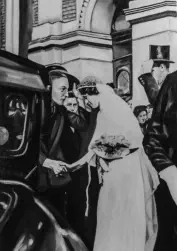
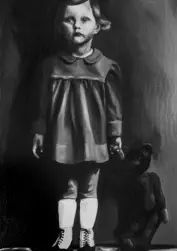
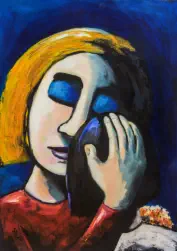
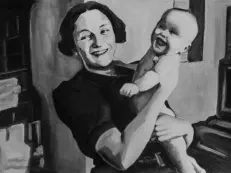
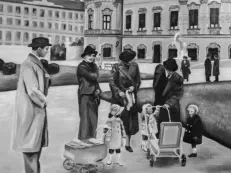
Vienna 1934 - 1938
Prior to the rise of Nazism and the outbreak of WWII, my
family lived in Czechoslovakia and Austria for a number of
generations. Both my grandparents were born and raised in
Vienna. My mother also was born here. On the 8th of
November 1938, my grandfather, Hans, aged 32, my
grandmother, Henriette, aged 29, and my mother, Anneliese,
aged 2 obtained a landing permit and escaped to Melbourne,
Australia.
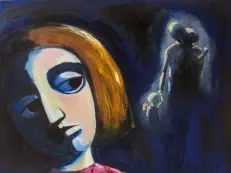
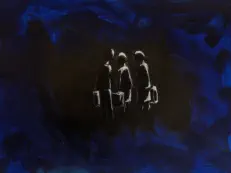
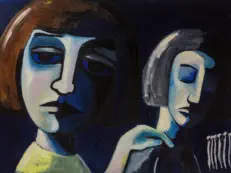
Elsa, 1938 - 1944
On 12 March 1938, Austria was annexed by Nazi Germany.
German troops crossed the border into Austria, unopposed
by the Austrian military. Hans Schwabach, his wife
Henriette, and daughter Annelise left their home in Vienna
and arrived in Melbourne, Australia on 13 January 1939.
Hans changed his name to John Carew and secured landing
permits for his wife's parents, Sigmund and Friederika, and
his mother Elsa. Sigmund and Friederika arrived in
Melbourne on 14 April 1940.
Elsa never received her landing permit, and along with her
brother-in-law Otto and niece Kathe, was sent to
Theresienstadt, a town used by Nazi Germany from 1941 to
1945 as a walled concentration camp and waystation to other
death camps. Otto died on 10 April 1944 from illness after
successfully convincing German troops several times not to
send Elsa away to another camp. Kathe was able to get Elsa
out of the transports one last time after Otto's death. After
that, those in charge would no longer listen to her pleas, and
in October, Elsa was sent to Auschwitz where she was
murdered by the Nazis on 9 October 1944. Theresienstadt
was liberated on 8 May 1945.
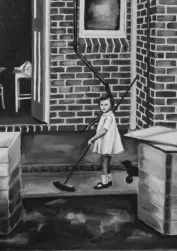
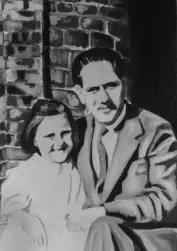
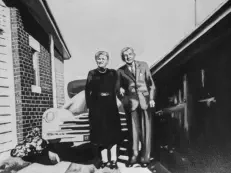
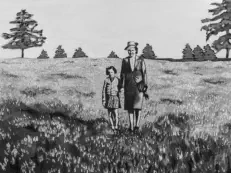
Melbourne, 1938 - 1950
The young family arrived in Melbourne on the 13th of
January 1939. Upon arrival, my grandfather obtained 2
more landing permits – one for his mother, Elsa, and one
for his parents in law, Zigmund and Friederike. On the 14th
of April 1940, Zigmund and Friederike joined the family.
Elsa never arrived. There was no word from her after the 8th
September 1942.
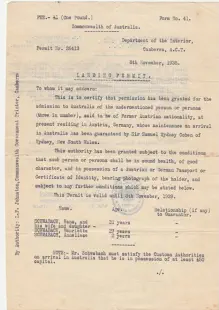
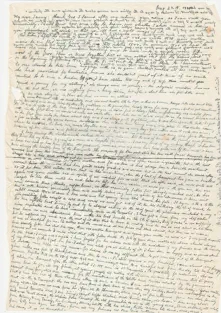
Original documents
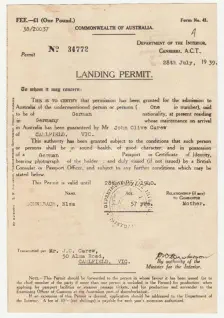
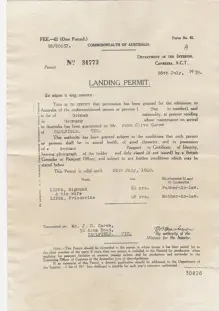
Family Tree
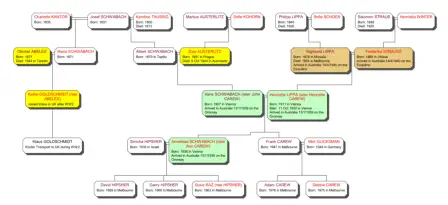
For the one whose voice was silenced
Background
For a number of years, I had been planning to write my
family’s story so it would not be lost to future generations.
My mother, already in her 80’s, was the last link to life in
Vienna, having escaped with her parents at the age of 2.
While I had already sorted through many of the original
documents kept by my grandfather, it was only during the
long hours of lockdown in Melbourne that I had the time to
pour over these documents more thoroughly. This was when
I discovered the letter from ‘Tante Kathe’, which had never
been seen by any living members of my family. Kathe, my
grandfather’s cousin, was sent to a concentration camp with
her father, Otto, and my grandfather’s mother, Elsa. Unlike
Elsa, she was not murdered by the Nazis.
In her letter to my grandfather, written from Prague in 1945,
Kathe recounts exactly what happened to Elsa. By this time,
my grandfather had already received a telegram from the
Red Cross notifying him that his mother had been murdered
in Auschwitz. My mother tells the story how she came home
from school one day to find her father sitting in the
loungeroom crying, the telegram in his hand. Although there
had been no word from Elsa after September 1941, for over 3
years he had lived in hope that she would be found alive
after the war.
It remains a mystery why Kathe wrote this letter to my
grandfather in English when their mother tongue was
German. Written on a flimsy piece of paper in minute hand
writing, my son and I began to decipher and transcribe the
letter using a magnifying glass. As the details of Elsa’s fate
unfolded, it became clear to me that I needed to tell her
story through my paintings. With no photographic evidence,
I used my imagination to create 5 paintings which
symbolically told Elsa’s story from the time before the war
when she was with her family to the moment she was sent to
Auschwitz. These I flanked with 10 more paintings based on
family photos – 5 paintings from my family’s life in Vienna
before the rise of Nazism and 5 paintings from the early days
in Melbourne of the family members who escaped. Elsa’s
story thus became the centre around which everything else
revolved.
Artist Statement
This project tells the story of the persecution of my family in
Europe during WWII. It focuses on the fate of both those
who were able to flee and those who were unable to do so,
most of whom perished.
The suite of paintings and accompanying documents
highlight the complex and enduring experience of refugees
who not only are forced to abandon a familiar way of life and
adopt a new identity in a foreign land, but are also often
forced to leave loved ones behind. If these loved ones die,
there is no opportunity for closure.
Elsa Schwabach was my great grandmother. A Jewish
woman living in Prague in the 1940s, her family obtained a
Landing Permit for her that should have enabled her to join
those who had already fled to Australia. Tragically, she never
received the permit and was murdered in Auschwitz in 1944.
It is my wish that by giving Elsa a voice through the telling
of her story, her dignity is reinstated and her memory can be
laid to rest.
Furthermore, I believe that telling stories of systematic
human injustice that have occurred throughout history is of
great importance for raising our awareness as a nation.
During the last decade I have witnessed the Australian
Government adopt policies that have dehumanized asylum
seekers under the guise of national security. These risk us
taking part in a collective injustice that perpetuates ‘the
banality of evil’ – a state of mind where cruelty is presented
as being perfectly reasonable.
Elsa’s story is thus of ongoing relevance. As wars rage
around our planet, this exhibition can contribute to building
a community that rejects all forms of discrimination and is
instead guided by compassion and mutual respect.
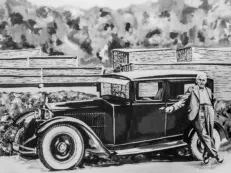
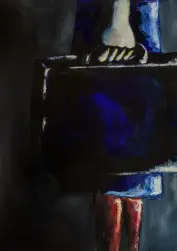
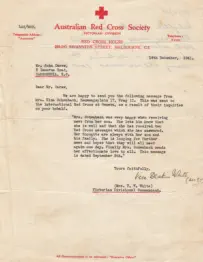
Family Tree














